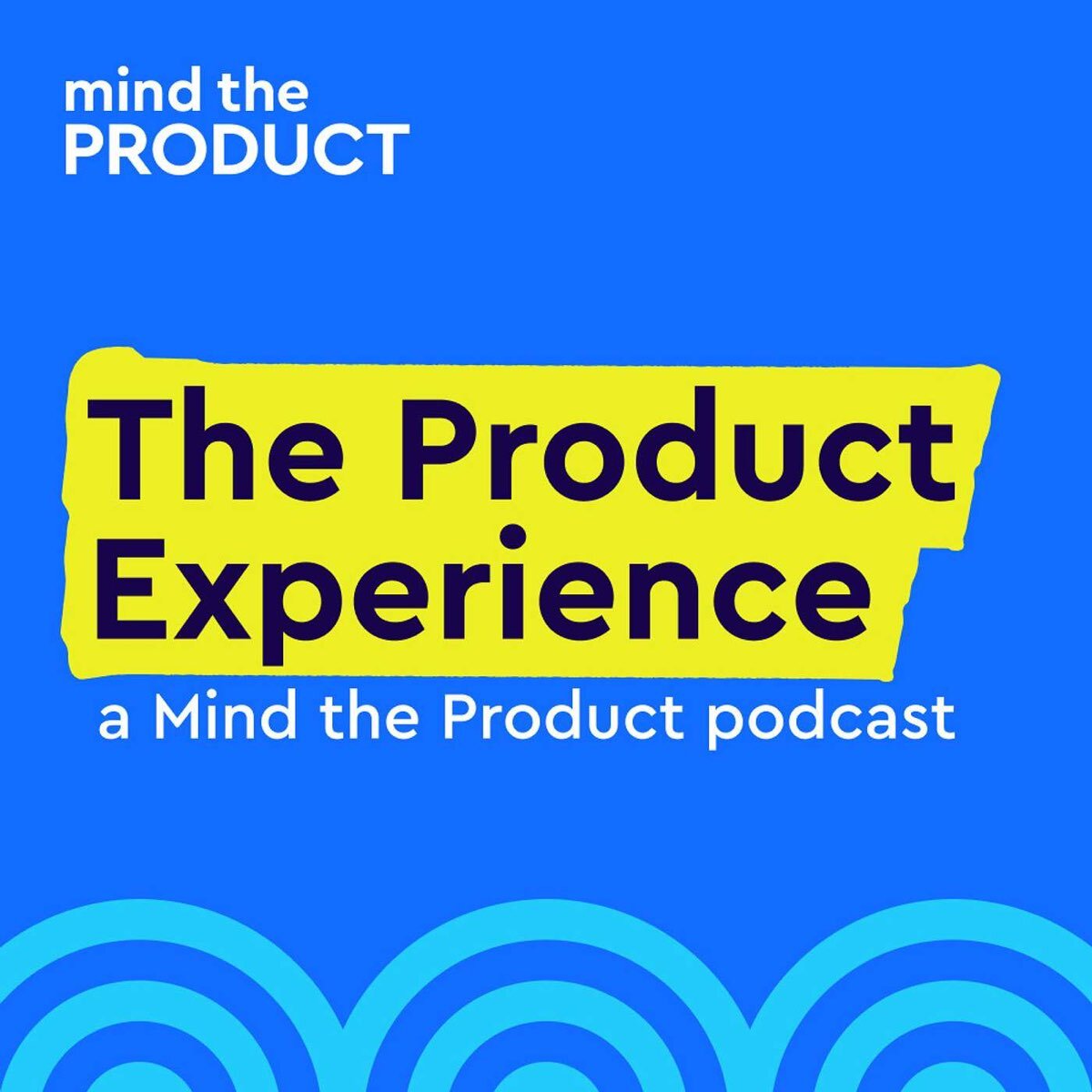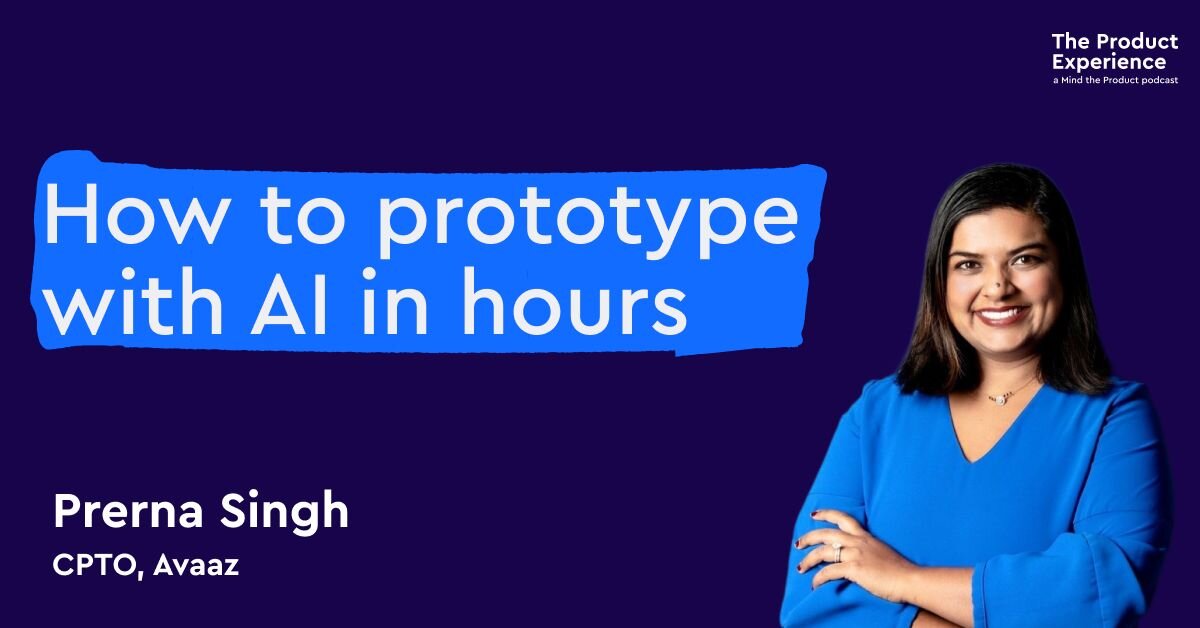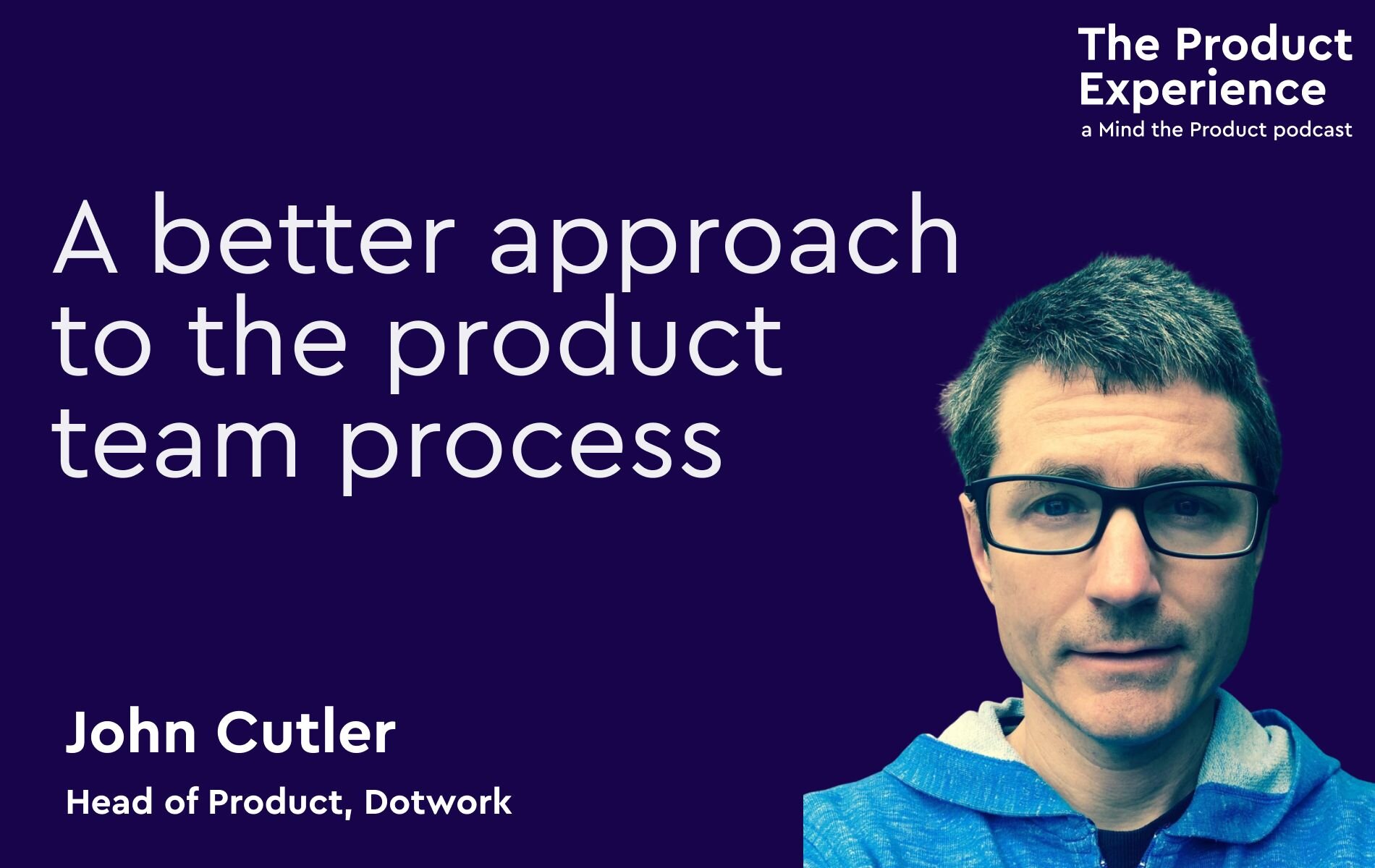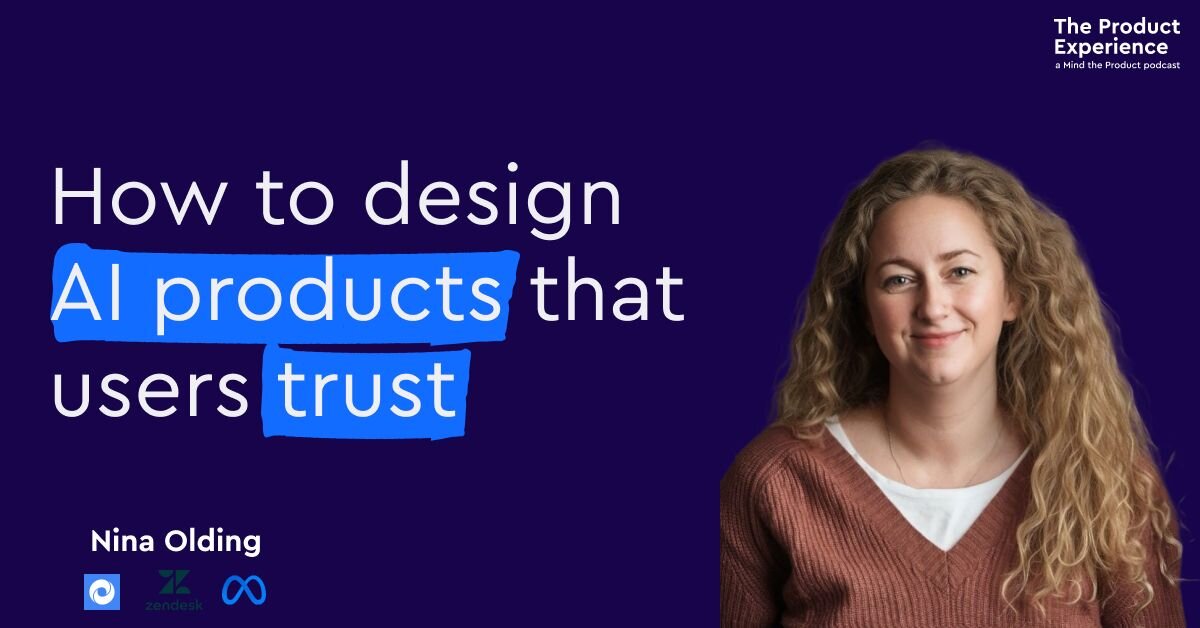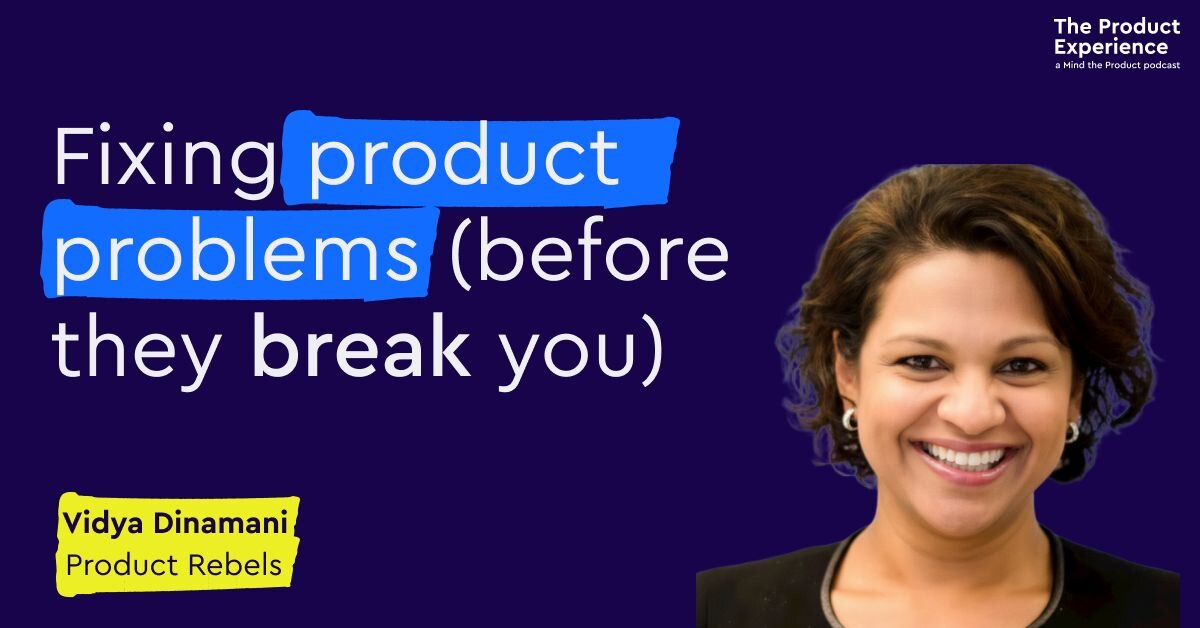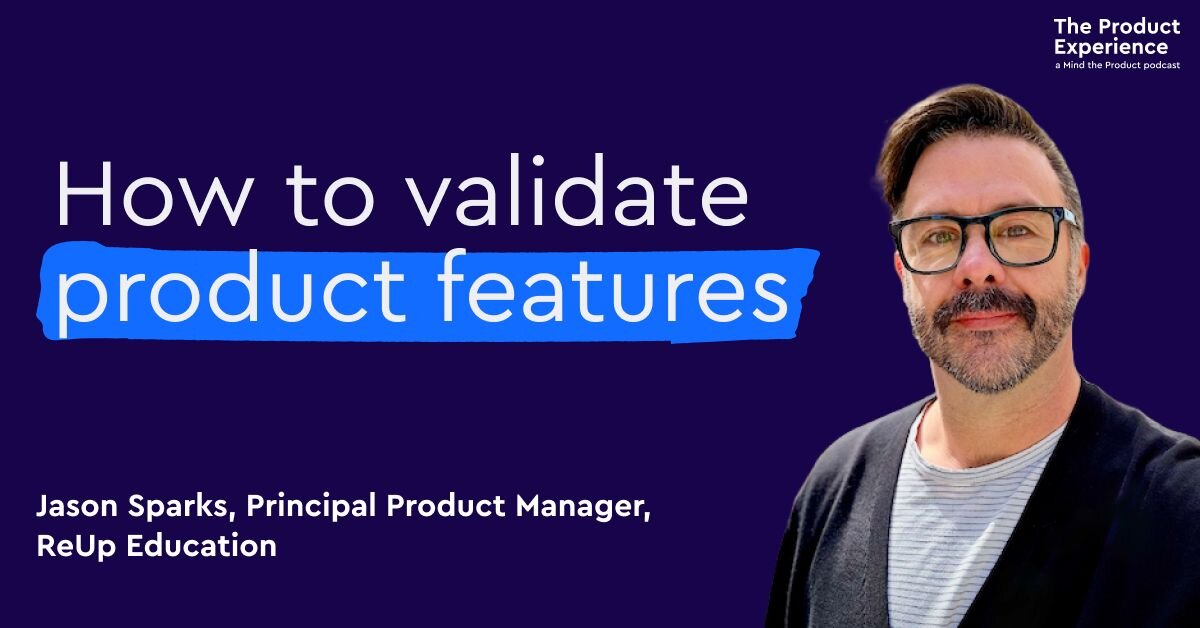On this week's podcast episode, we welcomed someone who needs no introduction. Marty Cagan, Founder and Partner of Silicon Valley Product Group , and Author of ”Inspired” and “Empowered” delved into a plethora of topics including strategy, vision, ethics, and ways of working. We struggled to fit so many product insights into one episode, so we decided to split it into two parts! Sit back, grab a drink, and listen to some of the wisest words of wisdom in product.
Featured Links: Follow Marty on LinkedIn and Twitter | Silicon Valley Product Group | Coaching – Managing Time article at SVPG | Two in a Box PM article at SVPG | Shreyas Doshi on Twitter | How to run a Project Premortem Exercise with your Team feature at Atlassian | Listen to part two here!
Episode Transcript
Lily Smith:
Hey, Randy, I'm super excited. This week we have the most famous product person joining us on the pod. Can you guess who it is?
Randy Silver:
Oh, this is a trick, isn't it? Well, I'm always on the podcast.
Lily Smith:
No, Randy, not you. It's only Marty Cagan, Founder and Partner of Silicon Valley Product Group and Author of inspired and empowered
Randy Silver:
We got to chat about all strategy and vision and ethics and ways of working, which was quite a lot. So we decided to split it into two whole episodes.
Lily Smith:
So sit back, relax, chill, get yourself a drink. And listen to the wise old words of one of the most experienced and passionate product teachers in the world. The product experience is brought to you by Mind the Product. Every week on the podcast, we talk to the best product people from around the globe, is it mind product.com to catch up on past episodes, and discover more
Randy Silver:
Browse for free, or become a mind that product member to unlock premium content, discounts to our conferences around the world, and training opportunities when the product also offers free product tank meetups in more than 200 cities. near you.
Marty, thank you so much for joining us on the podcast this week. For the two people listening who don't already know who you are. Do you mind giving us a two-minute introduction?
Marty Cagan:
Sure. Well, the name is Marty Cagan and I am the Founder of the Silicon Valley product group. I've been doing that for quite a few years now. But the first half of my career was working in product starting as an engineer. And then I learned product management. And then I learned product leadership. And I've been doing that for several companies. And I've written a couple books, one called Inspired, which is for product teams. One called Empowered, which is for product leaders. And basically most of my job is advising startups and growth-stage companies, my partners, I have five partners, and they mostly focus on helping existing companies transform. And so between us we meet with a lot of companies, some great companies just trying to get better some companies that are brand new to technology and needing a lot of help. So and everything in between. So
Randy Silver:
I was lucky enough to spend a few days with you earlier this year, and your partners in a whole bunch of other really smart people. And there's something you said during that time that really resonated and I think would benefit a lot of other people. But I wanted to dig into it a little bit further. It was about vision and strategy and who's actually responsible for them. So why don't we start at the beginning, who actually is responsible?
Marty Cagan:
I'm trying to remember the exact contexts we had. But it is, you know, first of all, this, the whole topic of product is quite the mess out there. And I think the reason it's such a mess is because when we say product, there's many different contexts we could be talking about. We could be talking about delivery teams like exist in environments that run processes like safe, we could be talking about feature teams, which are the most common that I see out there.
And we could be talking about what we call empowered product teams, which is what we see in the best product companies. And those are all very different. And the job of a product manager completely different doesn't really exist in the first one by any meaningful sense. But even in the second one and feature team, they're much more of a project manager than what we would call a product manager. So there's so much confusion and noise out there around what are we even talking about? And one of the ways that show up is this conversation about vision and strategy.
A lot of agile coaches that don't know anything about product will teach, novice product people. They'll say, oh, you're a product manager, or you're what they really say is you're a product owner, you're also responsible for product vision, product strategy, which of course is just nonsense, but they don't know any better. So they tell people this. But you know, the basic point is if you've got 20 product teams all working towards something significant a marketplace and ecommerce company and device. Do you really want all 20 of them creating their own product vision is to see really want all 20 of them creating their own product strategies talk about a mess, and it's just nonsense. It's just that obviously the people hadn't thought through it more than five seconds. So anyway, one of the big confusions out there is this idea hear that every product manager does product vision and product strategy. And what I think is funny is that I mean, I've criticised actually quite a bit, but one of the things I'm criticised for is they say, Oh, you put so much work on a product manager. Just to be clear, I don't put product strategy and product vision on a product manager. So what product, so product vision is the responsibility of the product leader, Chief Product Officer, VP, Product Director, product management, whatever the suitable title is there. And product strategy is how they're delivering on that vision, again, you have to be looking holistically across the teams for that. And then, of course, in a good product strategy, the main purpose is to identify the most important problems that need to be solved. Once you assign those problems to a product team. That's when the product teams get to work. And that's product discovery. And then once they figured out something to build that, then they put it on the backlog. And that's product delivery. So product vision product strategy, are super important, some of two of my favourite topics, but they're not product management topics, they are product leadership topics.
Lily Smith:
Okay, so there's so much talk about Justin, and what you've just said, but I'm gonna start with what if you're in one of those companies, where you're basically missing that product vision and that product strategy, which I hear of a lot of people saying, you know, the business talks about the business strategy and the business goals. And, but how do I distil that down for my own product and my own product team? If I don't have anyone else? Setting that from a product leadership point of view?
Marty Cagan:
Right? Well, this is where it's really important to realise because you just described the classic feature team company and it's, by the way, it's not, this is just a reality. It's not a judgement. If a company is set up, where the stakeholders are really driving what gets done, they usually are driving these roadmaps and they're giving these, they're working with the product team to feature teams on those roadmaps to say, you know, when can we get these features, there is no product vision, there is no product strategy. And that's not like it's missing, it's not needed in that model. They aren't the feature teams are literally there to serve the business. So you get a lot of you got a lot of, quote, product managers, I'm really talking about a feature team where they're not really product managers, but they're like, where's our vision, where's our strategy, you don't need one, you're there to serve the business. If you're an empowered product team working, where you're given problems to solve, that's very different. Now, you do need a vision and a strategy. So most of the confusion out there stems from not understanding the kind of product team you're on. And really what your responsibilities are on that team. And this is just one of many symptoms.
Lily Smith:
Do you think it's as black and white? Is that like, you're either one or the other? Or do you think there are teams? Because there are definitely people who are trying to move more to the empowered?
Marty Cagan:
Yeah, yeah, I mean, there are some things you can do for sure. But, you know, it is pretty clear, you're either given features to build, or you're given problems to solve, that's pretty binary. And it's not hard to see the difference. And of course, if you're given a problem, if you're given a feature to build projects to build on a roadmap, then your job is really to do a little design, and code and deliver, that's basically your job. On the other hand, if you're given problems to solve, you have a much different job, you have to figure out what to build, and you have to figure out a solution that works.
So those are very different assignments. You know, nothing in our industry is truly black and white. There are all kinds of variations we can talk about. The third major variation is even worse than a feature team. That is, literally there's a backlog administrator, product owner and a bunch of developers a lot of times as developers don't even work for the company. Those are those we call delivery teams, a lot of people will just call them a scrum team or, you know, they are just there to code. There's no pretence about product management or product design or anything like that. So it's not just the two. But I think the essence of your question is, is there a spectrum there? Really, you know, it's not that hard to see the difference. It only takes a few minutes to identify what's going on with a few questions. Usually, my favourite is talking to one of the engineers. You can tell very quickly with the engineers if this is a feature team We're a product team. And don't get me wrong. There are 1000s and 1000s of companies that want to be feature teams. And there are 1000s and 1000s of product coaches that want to help them be feature teams. So when I need a company that wants to be a feature team, then I just introduce him to one of those people. But because there's books, training classes, and all kinds of things. That's the way a lot of the world works. But that's not how the best companies work. That's not where it really almost any of the innovation out there comes from. So I don't find it interesting.
Lily Smith:
Okay, so let's concentrate on the best companies. And the best way to do it, which is the Empowered product teams, because they're the ones we love, and the ones that we really want to kind of aspire to be if we're not already or, you know, be proud of being if we are. So who and how are that vision and strategy set in those empowered product teams, you mentioned that it was the product leader. But if you're in a really big product org, there are like many product leaders.
Marty Cagan:
Well, let's talk about a real example. Just because of your very charming accent, I keep thinking of England right now. And train line, company, you probably know of trainline, you probably use probably have the app on your phone line. Trainline just a few years ago, was classic IT. They had no technology to speak of, and the private investment firm, private equity firm, I'm trying to remember which one it was, but they saw this company. So this is ridiculous, they should be a tech company. And so they bought them. And in a few short years, they turned it into one of the best product organisations in my opinion in the world. And they brought in a woman named Claire from eBay to be their new CEO, firs thing Claire did is brought in a proven product leader named Jonathan Moore, who by the way, I think might be a neighbour of yours, Lily, but Jonathan is, was he had led the real innovations going on at The Guardian. And I've known him for a long time anyway, he took over. And the first thing he did was set up real empowered product teams. And they got to work reinventing and reimagining the travel experience for riding the rail, first in the UK, and later across Europe. And that is, you know, anybody who was using the old and then went to the new, they could see the difference, they could see what happens, then in truth, you know, they started it was pretty small, because there was almost no tech there. But by the end, it was a pretty substantial organisation. So even in a large organisation, there's typically a single head of product. And they might have many directors under them, many lead managers under them, which is, you know, in, the larger you get, the more that's true. But in typically every business unit, if not the whole company, there is a head of product. In this case of trainline, it was Jonathan. And, you know, just like there's a head of technology, Chief Product Officer, Chief Technology Officer, and those two really pair up to do these things to turn places around.
Randy Silver:
So you talked about vision, which I totally see being something that you only have one for a company, and strategy at a high level, you'll have one but as you go down the organisation get closer to the coalface there will be more specific things and ways of doing it. So how do you handle that?
Marty Cagan:
First of all, I should clarify, some companies are so huge, I think Google think Amazon, that each business unit, each division would have its own vision and strategy. But a product strategy is literally meant to I mean, it's a product strategy. Let's be clear on what we mean by these things for some vision is describing your destination. Right? And it's all about how are you going to make your customers' lives better. Literally, how are you going to help them make their lives better? So vision is that Northstar, we often say because it's again, by definition meant to be so that it brings all of the product teams towards the same destination, typically five to 10 years out. So it's not something you're going to deliver tomorrow. So the product vision needs to be inspiring. It needs to be emotional, it needs to be like yes, this is going to make people's lives better. And I really want to work on this for the next several years. So product vision is a unique animal. I don't know anything else in the product world that's emotional like that. That's trying to be that compelling and persuasive. On the other hand, product strategy is very different. It's like brass tacks product strategy. It's like, okay, that sounds awesome. How in the world are we going to do that? How are we going to do that?
We need to decide we need to pick our battles, that's called Focus, we need to leverage insights, that's Data, that learnings from talking to our users and customers, that new technology trends, that changes in the industry. So competitive landscape, we need to decide what are the insights we're going to really make bets on. And then we need to turn those insights into something we can monetize, something we can build. And those are the problems to solve. And those are what we give to the teams, if we've got 50 product teams, you know, we're gonna make sure it doesn't mean we have 50 problems. Very often, if you've got 50 product teams, they might be given 15 problems where much of the time, multiple teams are actually given the same problem, either to work collaboratively on or to work in parallel on because you're really making a big bet. So it's not like a product strategy cascades. Now, the other thing I should really say, because this really messes up so many people, I'm talking about product strategy. I'm not talking about business strategy, I'm not talking about go-to-market strategy. I'm not talking about discovery strategy. You know, I, I'm talking about product strategy. There's lots of other kinds of strategy in the world.
Randy Silver:
So let's be really clear. What is this fundamental difference between? I think most of those are clear. But what's the fundamental difference between a product strategy and a business strategy? I think that trips a lot of people up?
Marty Cagan:
Yeah, I think it does, too. So business strategy, these are, first of all, one obvious difference is who's responsible for what business strategy is typically a C-suite decision. So for example, a few years ago, Netflix made a big business strategy decision to get into the content creation side of the business, because if you remember, for its first life, they were content distribution side of the business, not content creation, and that's a big business strategy decision. So the board decided the C suite decided, we're gonna get into content creation, not just content distribution, the product organisation had to get to work, because now is a very different assignment to try to make that a reality. So business strategy is done at the top level, it's usually things like, how are we going to make money, one of the most common examples is go-to-market. So they'll decide, you know, yes. Okay, let's say you're Atlassian, another great company. They started with a business strategy of selling direct to teams just direct to us, all of us. This direct engineers, direct to designers, and more recently, they decided to expand their go-to-market to have a direct sales force. That's a business strategy decision. And you can bet that has product strategy and product vision implications. Because you need different things. If you're selling through an enterprise sales force, you need to make sure you're not losing money on every sale, for example, because it's a different model. So the business strategy done by the senior level, and then the product strategy comes from the product leaders, how are we going to do this? That's product strategy.
Lily Smith:
How often would you expect to revisit your product strategy?
Marty Cagan:
So product vision, just to be clear, that's like once every five years, and those are when they're done? Tesla's was 10 years, they were on their second 10 year, product vision. Product Strategy is a living thing. So that is literally by the leaders updated constantly. Now, normally, with at least the companies I advise, we are explicitly revisiting it every quarter. So no less than every quarter, but in truth, here's what's going on. We've talked about the leaders, but when you look at the teams, the teams are working on problems every day, every week. And, you know, mostly they're in product discovery, they're learning. They're trying out ideas, usually with a prototype, usually with customers, and they're finding what works and what doesn't. Most of the time they find out their prototypes, not very good. And they just need to iterate. That's like the most common learning. But you know, we don't advertise that we just keep iterating but once in a while, the team actually learns not just that they need to do something, but they get a real insight. They realise Oh, we finally figured out Why people are not responding to this or why this doesn't solve their problem. Now, that's an insight, that's a big deal. The teams are coached and trained so that when they run into these occasional insights, and it could come from talking to users, it could come from the data it could come from the technology can come from lots of places, but their coach that when they find this, they share it with their manager. And the reason they do that is because of two reasons, number one, the manager might know of another team that's struggling with the same thing. Right, so they are there as a leader, as a manager to connect the dots. But more to the point, they share it because that insight might actually be important enough to be a key driver in the next iteration of the product strategy. So a real example is a company that experiments with a new mobile app, and they find that some things work remarkably better with the mobile app. This is not unusual why people do native app. And you find that out, you realise, wow, we've just barely done touch. We've barely put our toe in the water, but what we could do with mobile, so maybe we're going to update our product strategy to really double down on our bet on mobile. Why did you do that because of what you learned in this prior quarter. So a product strategy is still going to take us in the direction of the vision. But now hopefully, we're doing this based on the very latest learnings.
Randy Silver:
I've never met a product manager who didn't have a bit of a perception problem in that they spend all day working on one particular aspect of the business. And they believe it's the most important thing to everyone, because it's the most important thing to them. So you talked about the product leader setting the strategy and division you just talked about sometimes the product manager, the individual product manager and team, finding something else out, how do you balance at that lower level, to be having some responsibility for strategy and tactics, and then going up the ladder with that?
Marty Cagan:
Well, don't be clear on what I said was, they find that their coach so that if they run into an insight, discover an insight in the course of their work, no matter what that insight is, your obligation is to move that up the chain, so people can take advantage of that if it makes sense. Now your product leader is making the judgement call, is that what they're gonna bet on next quarter or something else. But that's the difference between the leaders' responsibility and the product teams, product managers responsibility. Now, you're sort of getting on another topic, which is, the premise of an empowered product team is you want to push decisions down to the teams, because they're the ones in the best position to make the best call. Now, that's because they're working with the technology every single day. And because they're talking with customers every single week. So who better to make the decisions? That sounds wonderful. But there's a catch. The catch is the leaders need to share the context. Otherwise, how can the teams make the decisions? So if the team doesn't understand the product vision, how are they going to know what to do? If the team doesn't understand the product strategy? How are they going to know if the team doesn't know what the other teams are in the team topology? How are they going to know? So they need to be able to make good choices. And in order to make good choices, good decisions, they need that strategic context. And that's why one of the major things that managers do to coach their product managers and their product teams is share that context, share that context. So it's not really about your thing being more important than anybody else's. We don't have product teams if they're not necessary. And no one team is able to do everything they need to do otherwise, it would just be one team. So you've got 25 teams, we're all doing a piece. The way we know this is working well is if every member, especially every engineer, on every product team knows how their work contributes to the larger hole, they can see they can connect the dots between what they're building every day, and the vision they're trying to achieve. If they can't, that's a real problem that says they don't have the context. It also says they're probably mercenaries and not missionaries, right. They're just probably saying, Just Just tell me what to build. I'll build it. And that's never what we want. That's not where great solutions come from.
Lily Smith:
So what about other parts of the business? You talked earlier about discovery strategy. And there are also things like data strategy or tech strategy. How do all of these different strategies come together in an ideal world or how have you seen this work really nicely so that everyone in the business and the organisation is really clear on how all of the different disciplines are working towards the vision?
Marty Cagan:
Sure, well, it's really important to distinguish between two kinds of people in the company. Everybody's wonderful, but there are those that are members of the product team. And then there are those that are stakeholders in the company that have an impact on the product team, but they're not on the product team. So the most of what you mentioned, was actually on the product team. So for example, product team, product management, product design, engineering, supported by user research, data analysts, sometimes data scientists, to help us do our work.
The user researchers help us make good decisions, qualitatively, the data analysts help us make good decisions quantitatively. But those are first-class members of the product team. That's what they do their credit, a product team, also known as a squad is a cross-functional group. So that's critical. Now, there are more people in the company than just product design and engineering, right? We have sales and marketing and customer success and manufacturing, and finance and privacy and all these different people. Are they on the product team? No, they're not on the product team. That would be first of all, they have their own jobs to do. Imagine how many people would have to be hired to be a member of those teams, but also, the purpose of you know, what the designers do, and you know, what the engineers do, the purpose of the product manager is to understand the constraints of those different parts of the business and represent them on the team. That's, if the product manager can't do that, what are they there for? So you don't need one. So that's really important to understand. So the product manager is, and that's why it's on the product manager as part of their onboarding, to learn these different parts of the business and learn what they're concerned about, like what is the lawyer most, you know, what is that lawyer nervous about? What are the things I need to understand as a product manager, that doesn't mean you need to be a lawyer, or you need to be a marketing expert, or you need to be a sales expert, you do need to understand enough of what their job is to be able to say, like, okay, I need to show this, we're working on something that the lawyer is going to care about. So I'm going to bring a prototype to the lawyer tomorrow. And I'm going to ask for 10 minutes, and I'm going to show it to the lawyer and make sure that what we're about to build is going to be okay. That's really the obligation of a product manager. And if you don't have somebody like that on a team, then you're back to design by committee. These are those feature team companies where they get all the stakeholders together in a room and they fight it out. And you end up with some worse-than-mediocre solution because it's the only thing they could all agree on in the room.
Randy Silver:
So if you don't start off in a company that's empowered, how do you start to get good at this? How do you build up the reps and build up the skills so that you can hopefully either transform the company or get a job at a better company?
Marty Cagan:
Yeah, well, the design and the engineering roles are not all that different. They're more like, let loose kind of thing. Product role is very different. So I tell people, if they're at a feature team company, if they're at a delivery team company, I try to be honest with them, it's unlikely they'll be able to do any kind of product work there, they probably need to go work on finding a company that knows better. But with a feature team, that's not really the case, a lot of feature team companies not only want to change, but they're in the process of change, and they're trying to change so I think it's worth giving it a real try in that situation. So what I encourage the person to do is go to your manager and say, Hey, why? Well, I would love to try to work this way. I'd love to learn what I need to do and give this a shot. What do you think about letting our team do this as an experiment for a few months? Let us run this way. If it works, well, great, sort of, we're starting a transformation. If it doesn't work, well, we could either iterate or maybe it's not for us. But most companies will say absolutely. That's a low risk way of trying things out, learning what we don't know. So I will tell you most of the time the management is like Go for it. The problem though, is that the product manager in particular, it's one of those Be careful what you wish for because now you got to step up. And a lot of product. You know this a lot of product managers when they figure out what the job really is on an empowered product team. They're like, Oh my God, that's Like so different than anything I've ever done. And I don't even know if I want to do that.
Randy Silver:
So let's be let's, let's be brutally clear about what the difference is. So when you meet people, what is the difference you see between someone who is good and you rate, and someone that is just going through the motions?
Marty Cagan:
Well, it's I mean that going through the motions is an issue in any role in any style. There are people that are just basically, they're just for a paycheck, and I blame their managers for that. They're not inspired. They're not motivated. The real issue is somebody who's say, grew up in a company that was feature teams, they've been used to being handed roadmaps, and they're being used to play in that cat herder role that so many people call. I actually saw something from Jana Bastow. I really liked her, I think she's terrific. And she was on Twitter, and she was explaining, yeah, it's like, you know, you're a product manager, she didn't say this. But my I, I will say she was describing a feature team, you know, you're in your, you're there, you fill in the gaps constantly. And pretty soon, you're working like crazy, because there are all these holes, and you're doing whatever you need to do to help. And that is what you have to do on a feature team. That's basically like a very motivated project manager. But that's not a product manager on a product on an empowered product team. That's a very different job. But I have a lot of sympathy for those people on a feature team and how they can get crushed by all these different people asking for all these different things. And once you've done it once, once you filled in and done at once, then everybody just assumes you're just going to do that going forward. And so a lot of these feature team project managers get crushed in all of these obligations. So if you're going to try to be a product manager on an empowered team, it's a very different job. So we start by, you know, first principles, what is your responsibility? First of all, you're responsible for being an expert on your users and customers, you're responsible for being an expert on the data that those users generate. You're responsible for understanding each of your stakeholders and what their constraints are, and building the trust so that they know that you will make sure you're considering their needs before you have your team build anything. And then you're expected to be on top of the industry trends and competitive landscape. So you know, the environment, your product will lead the run. And that's what you bring to the team. That's different from what a designer brings to the team. That's definitely different from what the engineers bring to the team on an empowered product team. You're not just a cat herder. In fact, normally, we have a separate person, that is that cat herder project manager, I like to use the Spotify term delivery managers for that. But that, you know, you have a real contribution in a empowered product team, the product manager is a maker, they're responsible for the value in the viability of the solution. So that's what they are signing up for. And for most product people, and I was definitely in this boat, it takes several months to do the learning before you can actually contribute to a product team.
Lily Smith:
So if we just take that back to the vision and the strategy topic that we started with, if we imagine just starting a new role, in a new company, as a product leader, so I am responsible for the vision and the strategy. What is the thing that I should do? Or what's your kind of like top tip for coming up with for developing a really inspiring vision and a really solid strategy?
Marty Cagan:
Well, the assumption here is that this is a product leader that's been there, done that at a product company, so they know what they're doing. As you know, because a lot of product leaders, it's their first time, they've never done this before. Because in that case, that's when I recommend in fact, Randy knows this because that's why we held the session in London, was to find more people we can recommend in those situations. So now I have a nice list of people that I can say, 'Alright, you've never done this before. I'm gonna let me introduce you to somebody who has and they can help you through it this first time'. So that's a big deal because and I mean, been there done that I mean at a real product company, not a feature team company. So that's the prerequisite otherwise, how in the world is the blind leading the blind otherwise, right? So but let's assume they either have you know, somebody like Randy to help them or they have. They've done it before. So now, they know that of course, their first obligation is coaching their people and their people know how to do their jobs, but they're also responsible for this vision and strategy. So there are, I mean, in the book empowered, I describe the methods that I encourage teams to use to create those product visions, there's also a bunch of firms now that have vision sprints, where in one week, you know, you get everybody together, and you come out, you come into it with the business strategy, you know, you asked about that before, that's one of the main inputs, and then you come out with a product vision. And anyway, there are some big choices to make, obviously, you want to the real nuances, actually, it's not so difficult in terms of creating the product vision, but you need to, you need to realise that the CEO needs to feel real ownership of that product vision, the challenge is that they rarely know how to create those product visions. So the art is to create it and include the CEO, such that at the end of that process, the end of that week, the CEO feels like this is our product vision, or it's his or her product vision, because remember, the CEO is going to be showing it probably more than anybody else, to investors, to prospective customers to prospective employees, this is huge for them. So it's important that the CEO feels a real sense of ownership of it, even if they hadn't weren't the ones that came up with it. And that's sort of the nuance there. This is why I mean, there are so many topics here, but this is why it's really important that if your CEO has a big ego, and I will just say most of them do, then the head of product needs to be sensitive to that, so that you don't get this thing going on with the you know, especially when it's two males that doesn't usually go well.
Randy Silver:
I can't tell you how many times either friends of mine or people I've coached have come to me frustrated and saying this thing I've been pushing for months and months. My stakeholder, my boss, my CEO, whoever it is, just came back and told me they had this great idea and it's what I've been telling them for months and I keep saying you've won you've successfully made it their idea that's that's a massive win.
Marty Cagan:
It is a massive win, but ego gets in the way of realising it's the win, so.
Lily Smith:
Okay, okay, stop right there. It's time for a short two-week interlude.
Randy Silver:
What! Two weeks? That's not fair. I was enjoying that.
Lily Smith:
I know. I know. I'm really sorry, kind of. We're saving the rest for part two. Because if you remember Randy, we had a load more questions for the godfather of product and it wouldn't fit into one episode.
Randy Silver:
Okay, yeah, fair enough. And we've got Thanksgiving coming up. So we're going to treat you with the return of one of our favourite episodes next week. And we'll come back with Marty for part two on the 30th of November. We'll see you soon.
Lily Smith:
See you then.
